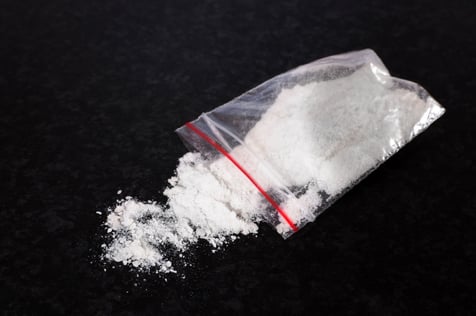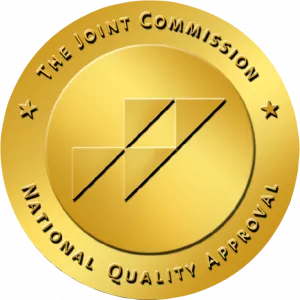You can theoretically eat meth, but it’s not advisable as it can lead to overdose, heart strain, organ damage, and severe stimulant toxicity.
Meth, or methamphetamine, is typically crystallized and snorted, smoked, or injected into the bloodstream. However, people have begun ingesting meth orally, a previously unconventional method of using meth.
There are many dangers, risks, and side effects of eating meth, many of which you probably are not aware of. This article will discuss what meth is, how it is used, what happens if you eat methamphetamine, and how you can help yourself or a loved one who is addicted to meth.

What is Methamphetamine?
Meth is a recreational drug classed as a stimulant. It is called ice, crank, glass, yaba, and crystal meth on the street, and is sold as a tablet, powder, or in crystal form. It increases the production of dopamine and serotonin in the brain- both hormones that make us feel pleasure, excitement, and happiness.
Meth has few medicinal properties, so it is mostly a recreational drug with a high potential of abuse. Methamphetamine hydrochloride (Desoxyn) is the only legal form of meth, and it is sometimes prescribed to treat ADHD (Attention Deficit Hyperactive Disorder). Meth has therefore been classed by the DEA (Drug Enforcement Administration) as a Schedule I drug.

Street names for meth:
- Ice
- Crank
- Yaba
- Glass
- Crystal Meth
Can You Eat Methamphetamine?
The short answer is yes, you can eat meth, and some people have begun to do it. The difference between snorting, smoking, or injecting meth vs eating it, is that when meth is eaten, it creates a delayed high in the body. It can take from around 20 mins to several hours to feel the pleasurable side effects of meth when taking it orally.
When injecting meth into the bloodstream, its effects are felt immediately because the blood delivers the substance directly to the brain and body. Eating methamphetamine, however, results in a much slower onset of effects - because the drug has to first traverse the digestive system and then enter the blood, causing the high to be delayed.

Parachuting Meth
Parachuting methamphetamine is the term used to describe the method of ingesting meth orally. It involves wrapping the meth in edible paper (like tissue) and eating it whole. There is no ‘safe’ way to use meth, although the side effects of parachuting it are different to other methods of ingesting the drug.
Why do People Parachute Meth?
People parachute meth because they believe it is safer than using meth in other ways. It is known that injecting or snorting meth can have fatal consequences, such as overdose. Many people believe that since the drug doesn’t enter the bloodstream right away when taken orally, there is less chance of overdosing.
Additionally, some meth users may crave the drug badly- usually when experiencing withdrawal symptoms - yet have no access to their paraphernalia at the time. For example, they may need needles to inject it, or a pipe so they can smoke it. Instead, they may resort to just eating the drug.

Risks Of Using Meth
Methamphetamine is a dangerous drug that causes several adverse effects on the brain and body, regardless of the method of ingestion. In the short term, the user feels more alert, energetic, excited, and confident, but in the long term, the effects are serious. Some of the adverse long-term effects of abusing meth include:
- Accelerated breathing
- Elevated heart rate
- Chest pain
- Muscle tension
- Dry mouth
- Elevated body temperature
- Kidney damage
- Stroke
- Tooth decay and loss
- HIV or hepatitis (when injected)
Dangers of Swallowing Meth
In addition to the side effects mentioned above, consuming meth orally carries specific risks and dangers, including:
- Irregular heartbeat
- Agitation
- Constipation
- Accelerated breathing
- Blurred vision
- Chest pain
- Difficulty breathing
- Dark-colored urine
- Dizziness
- Restlessness
- Shaky hands
- Swelling in the feet
- Headache and fever
- Muscle cramps
- Pounding in the ears
- Osteoporosis
- Fatigue
Withdrawal Symptoms of Meth
As meth exits the body, the user experiences a range of difficult effects. These are known as withdrawal effects. People who use meth regularly develop a level of tolerance so high that they require the substance just so they can feel ‘normal.’
In other words, the body has difficulty adjusting to a complete lack of drugs in the system, so it displays several unpleasant effects. As a result, the user craves the drug once again, sending them spiraling into a cycle of abusing the drug over and over again.
Here are some common withdrawal symptoms of meth:
- Fatigue
- Headache
- Hunger
- Muscle aches
- Tremors
- Depression
- Anxiety
- Paranoia
- Sadness
- Hopelessness
- Psychosis
- Insomnia
- Increased blood pressure
- Irreversible blood vessel damage
- Cardiovascular collapse
- Ventricular fibrillation (when the heart’s lower chambers quiver)
- Cerebral stroke (damage to the brain)
- Hemorrhage (internal bleeding)
- Delusions
- Suicidal ideation
Meth Addiction Treatment
If you or a loved one is struggling from the withdrawal symptoms or side effects of meth use, there’s a chance that you are addicted to methamphetamine. Addicts often believe they can stop the undesirable behavior if they really want to, but they find that they fail time and time again. Willpower usually isn’t enough to help you get and stay sober.
At Avenues Recovery Center, we want you to know that you aren’t alone. We’ve guided thousands of people through drug and alcohol addiction, helping them discover the root cause of their disorder while addressing it head-on with countless tools and skills.
Our in-house professionals will help you taper off meth safely through medical detox, and then provide one-on-one and group therapies to help you discover your path to healing, recovery, and serenity. Reach out today to start your journey home!



